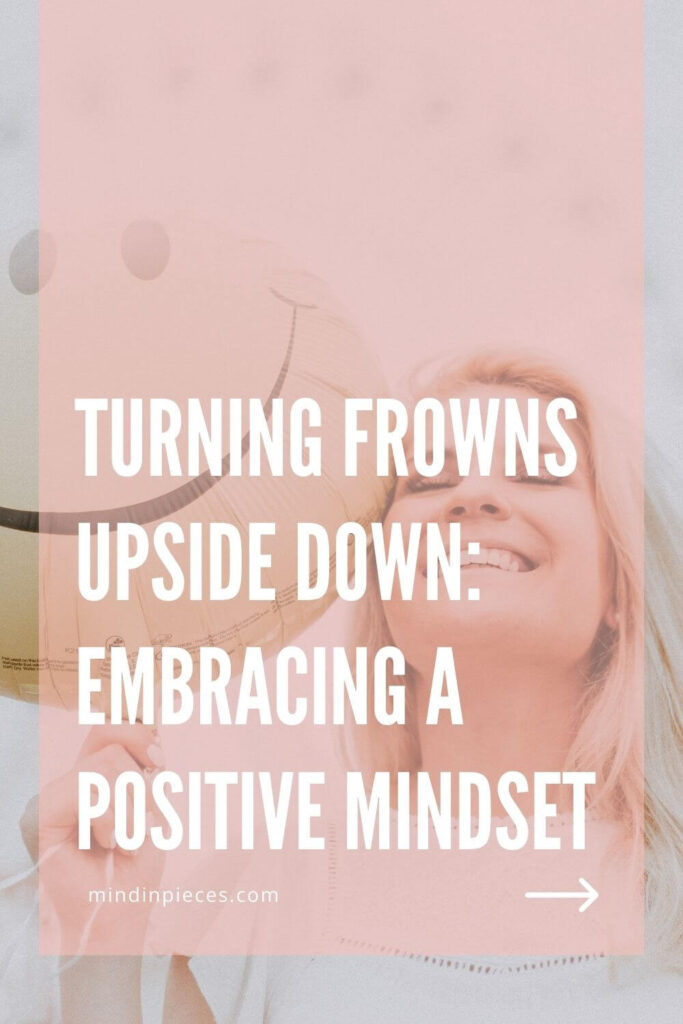Life isn’t perfect, but your mindset can shape how you experience it. Understanding how to be positive can help you reduce stress, build resilience, and find happiness in everyday moments.
Positivity is the practice that involves the habit of approaching life with an optimistic mindset and a positive attitude. When we practice positivity, we not only think optimistically, but we also feel good and show kindness and generosity to others.
Some days we experience sunshine and rainbows. And some days, it feels like you’re caught in a storm. We all experience golden days when everything aligns with your mood, your energy, your outlook on life, and you feel unstoppable. But let’s not forget the dark times when the weight of the world makes it hard to see clearly through stress and uncertainty. It’s in those moments when knowing how to be positive becomes your secret weapon. You can use it to make the unmanageable feel a little more bearable, and the struggles a bit less suffocating.
Are you ready to find out more about the power of positivity? You’ll learn about its benefits and easy-to-use strategies that you can include in your daily routine to stay strong and positive no matter what life throws your way.
The Power of a Positive Perspective
A positive perspective doesn’t blind you to life’s challenges. The real power of positivity is how it enhances your resilience, helping you face them head-on. Think of it as wearing rose-tinted glasses that don’t change your circumstances but transform how you respond to them. They highlight opportunities while still showing you the full picture. When facing big challenges, a positive perspective gently nudges you toward possibilities, helping you build the resilience you’ll need to overcome whatever stands in your way.
How Embracing Positivity Can Transform Your Life
As a positive mindset becomes a habit, you’ll naturally focus on what you can control rather than what you can’t. You’re not ignoring reality, you’ve just trained your brain to look for constructive perspectives. This transformation sets the tone for how you experience and respond to life’s ups and downs.
The Benefits of Positivity
Positivity does more than just lift our spirits. It plays a significant role in enhancing our mental, emotional, and even physical well-being. Let’s explore the numerous benefits that come with embracing a positive mindset.
Psychological and Emotional Benefits of Positivity
Positivity is like exercise for the brain; the more you practice, the stronger your mental muscles become.
Here are some of the psychological and emotional benefits of staying positive:
- Reduced Stress: A positive mindset helps you deal with stress more easily.
- Improved Resilience: Bounce back from setbacks more effectively.
- Enhanced Self-Esteem: Builds confidence and makes you feel better about yourself.
- Increased Happiness: Experience greater overall satisfaction with life.
- Better Coping Mechanisms: Develop healthier ways to deal with negative emotions.
- Increased Optimism: Cultivate a hopeful outlook on the future.
- Greater Creativity: Approach problems with an open and creative mind.
- Improved Relationships: Foster more constructive and understanding connections.
- Higher Motivation: Set and achieve goals with renewed vigor.
- Reduced Anxiety: Minimize feelings of worry and unease.
- Better Problem-Solving: Tackle challenges with a can-do attitude.
- Increased Empathy: Show greater compassion and understanding towards others.
- Greater Overall Mental Well-being: Enjoy better mental health and emotional balance.
Physical Health Benefits of Positivity
Choosing to stay positive can actually help improve your physical well-being, too. A positive mindset can reduce stress, boost your immune system, and even help you sleep better. A positive mindset helps your body cope with challenges and can lead to better overall well-being.
Here’s how a positive mindset can do wonders for your physical health:
- Longer lifespan
- Better heart health and reduced risk of cardiovascular diseases
- Enhanced immune response, helping to ward off illnesses
- Reduced risk of stress-related ailments, including stroke and cancer
- Lowered levels of pain and discomfort
- Reduced risk of respiratory-related mortality
While the exact reasons behind these benefits remain a mystery, there are a couple theories. One theory suggests that a positive outlook helps us manage stress more effectively, thereby reducing its harmful effects on the body. Another theory is that positive individuals tend to lead healthier lives, making better lifestyle choices that contribute to overall well-being.
Understanding Positive Thinking
Positive thinking is about shifting your focus to what’s good rather than what’s bad. Thinking positively trains your mind to spot opportunities and solutions, even when faced with difficulties. This mindset helps you view setbacks as temporary and see them as opportunities for growth.
Another crucial aspect of positive thinking is self-awareness and self-talk. By becoming aware of your inner dialogue, you can replace negative self-talk with uplifting, constructive thoughts, boosting your self-esteem and confidence.
Gratitude also plays a key role in positive thinking. By appreciating the small blessings in life, you learn to be happy with what you have, so you don’t feel as jealous or dissatisfied.
Positive thinking can be linked to resilience. Think of resilience as a muscle, and positive thinking as the workout plan that strengthens it. When you approach challenges with a positive mindset, you build your resilience, empowering yourself to bounce back from setbacks more easily.
Cultivating a Positive Mindset
Like learning any new skill, cultivating a positive mindset requires practice, patience, and dedication. It’s like tending to a garden; nurture it and the flowers of positivity will bloom.
Recognizing and Overcoming Negative Thinking
The first step towards a positive mindset is to become aware of your thought patterns. Think of it as being a detective, investigating the recurring negative thoughts that creep into your mind. Once you identify them, you can challenge and replace them with more positive, helpful alternatives.
How to Be Positive: Practical Strategies for Positivity Every Day
Positivity is a way of living intentionally. Adding positivity into our daily routine involves simple yet powerful practices. From starting our day with gratitude to engaging in self-love, these strategies can gradually infuse our lives with positivity.
6 Practical Strategies for Maintaining Positivity Every Day
- Focus on Your Strengths: Acknowledge your positive traits and remind yourself of them often.
- Use Positive Affirmations: Speak words of encouragement and positivity into your life.
- Practice Gratitude: Keep a gratitude journal and make a habit of recognizing the good in your life.
- Live in the Present: Practice mindfulness and focus on the here and now.
- Practice Self-Care: Be kind to yourself, take breaks, and engage in activities that bring you joy.
- Shift Your Focus: When negative thoughts arise, redirect your attention to something positive.
Gratitude: The Gateway to Positivity
Gratitude is a powerful tool for cultivating positivity. By focusing on what you have, rather than what you lack, you can foster a sense of contentment and joy.
Think of gratitude as a special key that unlocks the door to a more positive life. By practicing gratitude, you teach your brain to focus on the good, even in tough times, and to find things to be thankful for in everyday situations.
The Practice of Keeping a Gratitude Journal
A gratitude journal is like a treasure trove of positive memories. Each day, jot down the things you’re grateful for, and over time, you’ll create a valuable collection of reminders of all the wonderful things that make your life special.
Finding Joy by Living in the Present Moment
Mindfulness is all about immersing yourself fully in the present, savoring each moment, and connecting deeply with your experiences. This is a practice that helps us discover inner calm and joy amidst life’s chaos. The beauty of mindfulness is its close relationship with positivity. When you’re mindful, you naturally foster a more positive outlook.
Understanding Mindfulness and Its Connection to Positivity
Mindfulness helps you break free from routine and appreciate the moment you’re in. Instead of getting caught up in regrets about the past or anxieties about the future, it encourages you to focus on and appreciate the present. When you truly embrace the moment you’re in, you develop a deeper gratitude for life’s simple pleasures, leading to a more positive mindset.
Including Mindful Practices to Enhance Well-being
Mindful practices come in various forms, from meditation to deep breathing exercises. These techniques train our minds to respond with greater calm and thoughtfulness. By making mindfulness part of your daily routine, you’ll find it easier to stay grounded during challenging times and uncover happiness in the small joys of life.
Creating a Positive Environment
The people and places around you have a big impact on how you feel and think. Imagine your life as a painting, and positivity is the color that makes it bright and beautiful. Creating a positive environment means setting things up in a way that makes you feel good and brings good energy into your life.
The Impact of Your Surroundings on Your Mood
Consider how your mood shifts between a cluttered, chaotic space and a well-organized, serene one. Your surroundings can directly impact your emotional state. Tidying up, organizing, and adding personal touches to your space can create an atmosphere where positivity can thrive.
Designing Your Space for Positivity and Inspiration
Designing a space that fosters positivity requires a bit of thought and effort. Create an environment filled with things that bring you joy and inspiration, be it through adding plants, choosing calming colors, or displaying artwork that resonates with you. Each small decision contributes to making your space a sanctuary of positivity.
Nurturing Positive Relationships
Building and nurturing positive relationships is a powerful way to support your mental health and maintain a positive outlook. Strong, supportive connections act as buffers against stress and infuse your life with joy. By investing in these relationships, you enhance your emotional well-being and surround yourself with a network of support.
The Impact of Relationships on a Positive Mindset
Surrounding yourself with positive, encouraging people nurtures your emotional health. Supportive relationships offer validation, empathy, and shared joy, reminding you that you’re not alone in your journey.
Even positive relationships face conflicts, but their strength lies in effective communication and conflict resolution. By improving how you communicate and address disagreements, you create a space where everyone feels respected and understood.
Overcoming Challenges with a Positive Attitude
Challenges are an inevitable part of life, but our response to them is what we have control over. Having a positive attitude doesn’t mean that you are ignoring the difficulties in your life; it means that you approach them with confidence, creativity, and a willingness to grow.
Using Challenges as Opportunities for Growth and Learning
Positivity does more than just make you feel good; it also strengthens your mental resilience. When you stay positive, you’re better able to handle difficult situations and bounce back from setbacks. This positive mindset can also improve how we approach challenges in work, relationships, and even in how we take care of ourselves. The more we focus on the good, the easier it becomes to face life’s ups and downs with confidence.
Building Resilience through Positive Problem-Solving
Resilience means overcoming obstacles and growing stronger from challenges. Instead of dwelling on problems, positive problem-solving helps us focus on finding solutions. This way of thinking boosts creativity and encourages us to take action.
Spreading Positivity to Others
Positivity isn’t just a personal journey; it extends to those around you. Your positive attitude can brighten someone’s day, inspire change, and improve the well-being of those in your circle. This ripple effect highlights our interconnectedness in the shared human experience.
How Your Positivity Spreads to Those Around You
Visualize positivity as a pebble dropped into a pond, creating ripples that spread outward. Your positive attitude and actions can influence the lives of those around you, becoming a powerful source of support and inspiration.
Kindness is universally understood and spreads rapidly. Whether through grand gestures or simple, thoughtful acts, kindness touches both the giver and receiver. These acts can brighten someone’s day and inspire continued kindness, reinforcing the inherent goodness in the world.
Your Journey to a Brighter Life
Remember, focusing on the bright side of life is a continuous journey. Living a brighter life involves remaining aware, cultivating a positive mindset, and making choices that reflect kindness and uplift others. By integrating positivity into your daily life, you not only enhance your own happiness but also contribute to making the world a bit brighter. Keep moving forward with optimism; your positive outlook lights the path.
What challenges do you face when trying to stay positive? Let’s discuss ways to overcome them!
References
- Positive thinking: Stop negative self-talk to reduce stress – Mayo Clinic
- Wellness Tips Mindset – Carver College of Medicine
Save This Post for Later
Pin this blog post by saving the image below to Pinterest so you can revisit it whenever you want!









